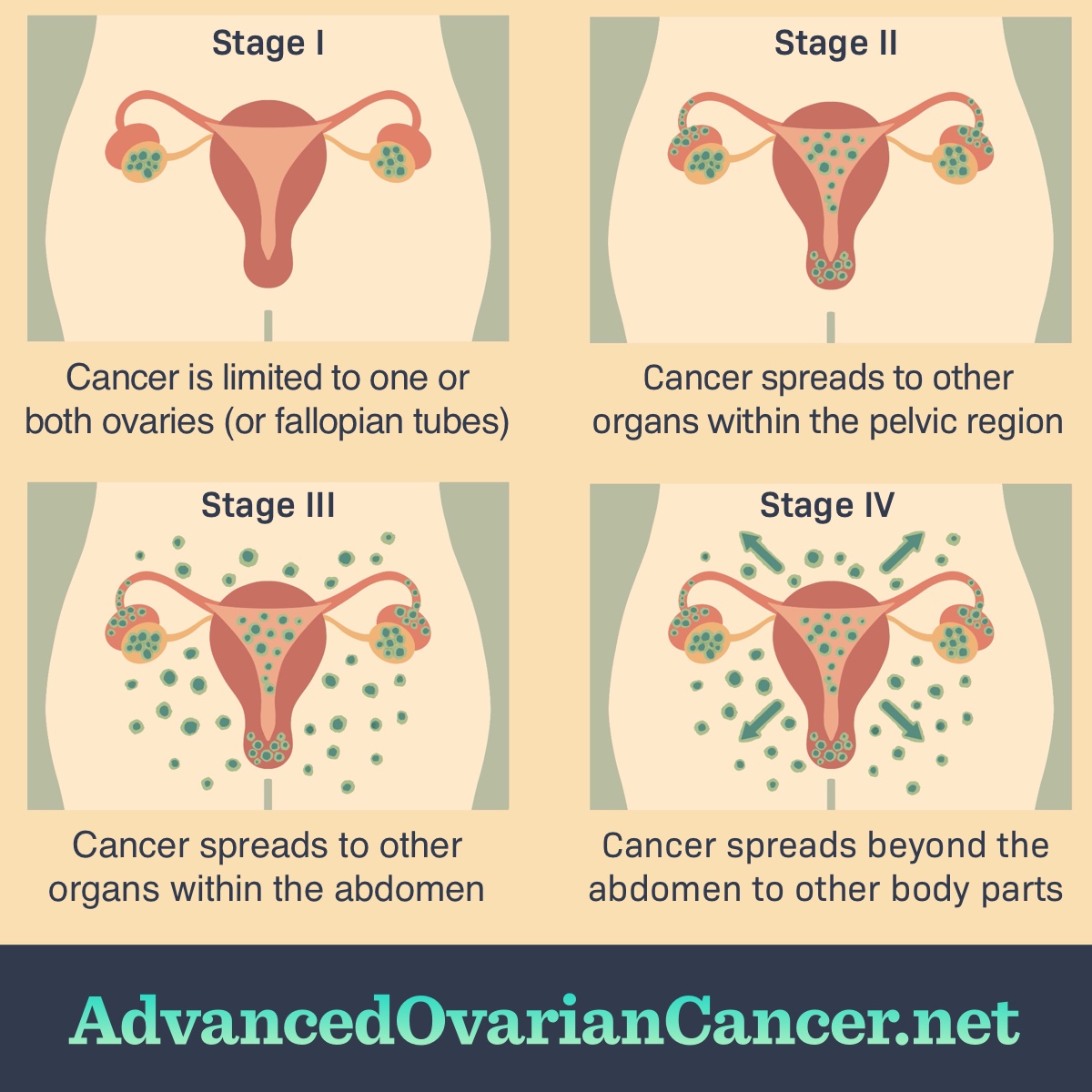Stages of Ovarian Cancer
Reviewed by: HU Medical Review Board | Last reviewed: May 2021 | Last updated: April 2024
After a diagnosis of ovarian cancer is made, staging is then done. Staging describes how much cancer is in the body and where it has spread, if at all. This helps your doctors and treatment team figure out a course of treatment and how to best approach your care.
The stage can also give them an idea about your prognosis and survival rates. Prognosis is the likely outcome or the course of your ovarian cancer. It can also refer to the chance of recovery or recurrence (returning after treatment) of the cancer. Survival rates in cancer are often called 5-year relative survival rates. These rates compare people with the same type and stage of cancer to the overall population without cancer.1,2
It is important to keep in mind that each person is different, and you are not a statistic. Statistics do not reflect your unique situation and what you may experience. What statistics can do is give you a general idea of how others with a similar course of disease have fared.
What are the stages of ovarian cancer?
The stages of ovarian cancer range from stage I to stage IV, with higher stages reflecting more advanced cancer. Stage IV is the most advanced. Surgery and imaging tests help doctors classify the stage, provide a picture of where the cancer is, and how big the tumors are.3
There are different ways to stage ovarian cancer, but they generally overlap and can be used together. Some classification systems can be more confusing than others. If you do not understand anything about your specific cancer stage, ask your doctor to explain it.
Figure 1. Ovarian cancer stages
Stage I ovarian cancer
Stage I ovarian cancer is known as early-stage cancer. It is further divided into 3 sub-stages:4
- Stage IA – Cancer cells are found only in 1 ovary or fallopian tube
- Stage IB – Cancer cells are in both ovaries or both fallopian tubes
- Stage IC – Cancer cells are in 1 or both ovaries or fallopian tubes AND one of the following:
- There are cancer cells in the outer layer of the ovaries or fallopian tubes
- The capsule, or ovarian covering, has broken open
- Cancer cells have been found in the peritoneal cavity (space containing the abdominal organs) or its lining, or in abdominal fluid
Stage II ovarian cancer
In Stage II ovarian cancer, the cancer has started to spread and is no longer confined to the ovaries. There are 2 sub-stages:4
- Stage IIA – Cancer has spread from 1 or both ovaries to the fallopian tubes and/or uterus, OR it has spread from the fallopian tubes to the ovaries/uterus
- Stage IIB – Cancer has spread in the peritoneal cavity to the bladder, colon, or rectum
Stage III ovarian cancer
In Stage III ovarian cancer, the cancer is more advanced. There are 3 sub-stages:4
- Stage IIIA can be applied in 2 instances:
- Cancer cells have spread to the closest lymph nodes to the ovaries/fallopian tubes, which are called retroperitoneal lymph nodes
- The surgeon cannot see cancer with the naked eye; however, using a microscope, a pathologist can detect that cancer has spread to the peritoneum, or the lining of the peritoneal cavity (the cancer may or may not involve the lymph nodes)
- Stage IIIB – Cancer in the peritoneum is visible but is 2 centimeters or smaller, and the cancer has also spread outside of the pelvis (the cancer may or may not involve the lymph nodes)
- Stage IIIC – Cancer is 2 centimeters or larger and has spread outside of the pelvis to the peritoneum. It may also have spread to the outside of the liver or spleen, as well as neighboring lymph nodes.
Stage IV
Stage IV is the most advanced stage of ovarian cancer. There are 2 sub-stages:4
- Stage IVA – Cancer cells are found in fluid that has built up around the lungs
- Stage IVB – Cancer has spread to organs and tissues outside of the abdomen, including lymph nodes elsewhere in the body
Things to know about ovarian cancer stages
The stage of cancer helps guide your treatment and gives you and your care team a better idea of how severe the disease is. No matter what stage your cancer is, there are treatments available to treat both the cancer and your symptoms.
Talk with your doctor about how they staged your cancer, what this means for your situation and your goals for treatment. Together, you will come up with a treatment plan that is best for you, your symptoms, and the stage of disease.
